by Rex Funk in the July and August 1995 RootesReviews
This article is aimed at the enthusiast who wants to use an Alpine as an everyday runner. It suggests modifications which would give the purist restorer a bad case of indigestion, so it’s not for the squeamish. The idea is to have a reliable car that is outwardly stock, and easily restored to original need be. So remember to save all stock parts. These mods are aimed at reliability rather than performance; peace of mind rather than lower lap times.
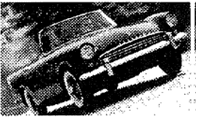 The process of building reliability into anything consists of finding the weak links and eliminating them. It is an ongoing process. Make it a point to improve the quality of any part you replace, while allowing for re-installation of any stock parts in the future. Later model cars from the same maker often provide upgraded parts which bolt right on. For my ’61 Sunbeam Alpine I upgraded the fuel, cooling, electrical, and brake systems as well as the engine and driveline.
The process of building reliability into anything consists of finding the weak links and eliminating them. It is an ongoing process. Make it a point to improve the quality of any part you replace, while allowing for re-installation of any stock parts in the future. Later model cars from the same maker often provide upgraded parts which bolt right on. For my ’61 Sunbeam Alpine I upgraded the fuel, cooling, electrical, and brake systems as well as the engine and driveline.

Lets be clear up front: British cars get a bad rap. Most of them were never made to go as many miles as we push them, nor were they meant to last 30-60 years. They are not as a rule terribly sophisticated, and they require just a little more maintenance than other cars of the era. Treated right, and with a few tweaks, it is possible to make a reliable runner out of a maintenance nightmare. Lets take the systems one at a time and see how this can be done.
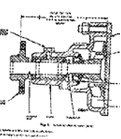
COOLING SYSTEM:
Most British cars were designed for the cool climate of the British Isles. If you’re caught in traffic in the heat of the day, you’re going to boil over. To combat this I had a stock 2 core radiator modified to a 3 core (cost $120). I then installed an oil cooler from a later model engine, and an electric fan from a Honda Civic ($20 from a junkyard) ahead of the radiator. The latter keeps the air flowing through the radiator in slow traffic. Other cooling mods I’m considering are a finned aluminum oil pan (from an Alpine GT), and a 14lb. radiator cap (stock is 7lb.) The latter increases the boiling point of the coolant, and requires reinforcing the heater core ends. These mods have kept temps within limits, and other than a few holes in the sheet metal, don’t affect the outward appearance of the car.
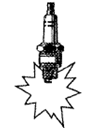
ELECTRICAL SYSTEM:
The dreaded “Lucas Disease” has a number of cures. Start with the longest lasting, most powerful battery you can afford. I’ve found that a sealed battery such as the Delco Freedom series is the best choice for my Alpine which has the battery mounted under my rear “occasional” seat. The sealed battery cuts down on upholstery eating caustic fumes and spilled acid. Inspect and replace all frayed, brittle, or poorly insulated wiring. Clean connectors, lugs and other contacts with a Scotchbrite pad, and use di-electric grease to help prevent corrosion. Convert positive ground systems to negative ground. Run a newly rebuilt starter motor and generator or alternator. An ammeter is also a must. Alpines had only one fuse box with 2 fuses. I installed an additional fuse box for accessories. I found that a horn relay really improved the performance of my Clear Hooters. I replaced my single speed wiper motor with a dual speed unit from a Series III Alpine. Consider converting to an internally regulated alternator. Nissan/Datsun pickups in the middle ’80s had a small alternator that adapts to these cars nicely. My alternator keeps up with halogen head lamps, driving lights, and other current suckers without problems. In fact, this alternator is without a doubt the best modification I have made yet for reliability.

FUEL SYSTEM:
An electric fuel pump can improve reliability and fuel delivery. Remove the mechanical pump and seal the mounting hole with a blanking plate and gasket. I found through trial and error that a 2-5 lb. pressure rotary fuel pump like the one from Carter has the best reputation for reliability (most solenoid actuated “thumper” models are to be avoided). Mount it near the gas tank with rubber insulating grommets to avoid excess noise and vibration. You should check to see that your pressure is within specifications, and you’ll need a fuel pressure regulator valve. For solid reliability, there is nothing like a properly set up Weber carb. The most common model for 4 cyl. cars is the DGA V range down-draft 2 barrel progressive carb. Some have automatic chokes, and some are manual. Twin Mountain Induction and other carb shops sell kits. Follow your mechanic’s recommendations about air cleaners, linkage, and other modifications. Most gas tanks from these classic cars can use some refurbishing. I took mine out, removed the float and sender, and put a tow chain inside. After about 30 minutes of agitation to remove rust and scale, I blew it out, washed with solvent, and treated the inside of the tank with POR-15 gas tank coating. This resists MTBE and other nasty additives, converts rust, and binds any residual crud which could enter the fuel system. An inline fuel filter was also installed, and metal fuel lines were used where possible. Eliminate all leaks, and carry a halon fire extinguisher in the car just in case. Halon does not attack your wiring or create impossible cleanup problems. I run super unleaded with a lead substitute, but I’m considering converting my engine’s valves, seats, and guides to more modern hardened units so I can burn unleaded gas straight. I’ve found quite a difference in various brands of gas, so find a couple that you like and stay with them.
Next time I’ll cover brakes, engine mods, driveline, theft protection, and accessorizing. If you have any feedback, tips or suggestions, you can write the editor.
![]()
Part 2
In the first article, I focused on modifications to help make an Alpine more reliable as an everyday runner. None of these mods greatly change the appearance of the car, and all of them can be reversed to return the car to nearly original condition; give or take a few holes in unexposed sheet metal. In this second and last article, we’ll take a look at brakes, engine mods, driveline, theft protection, and other accessories. I am grateful to the many enthusiasts and pioneers who have shared their expertise through tech tips, hours on the phone, and in many other ways. Much of what is mentioned here I have tried on my Series II Alpine with success. I hope you can use it to improve the reliability of your car.
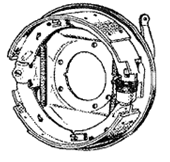
BRAKE SYSTEM:
It has been said that British cars are hard to get running, but once you do, there’s no stopping them. Actually, most Girling or Lockheed systems found on British cars are adequate to good. They do, however, require proper maintenance and occasional rebuilding. Girling recommends Girling or Castrol brake fluid only in its systems. Silicone brake fluid reportedly swells rubber pistons and seals, and conventional fluids will attack them. The aluminum bores of a Sunbeam’s brake cylinders are subject to pitting. While it is possible to polish the bores, new cylinders are recommended. An alternative is offered by White Post Restorations. For $30-50 per bore they will install a brass liner. Disc brake pistons are often hard chromed, and when pitted must be replaced (expensive). When replacement is required, you should opt for aftermarket stainless steel pistons supplied by Sunbeam Specialties and some others. The new Teflon or semi metallic brake pads and shoes will give better service than the old asbestos numbers. Be extremely careful around brake dust, and wear a respirator. Later Sunbeams incorporated a Girling vacuum operated booster. This lowered pedal pressure and improved braking. These units are difficult and tricky to rebuild, and adapting a more modern unit might be the way to go. Periodic adjustment of the rear shoes and bleeding the system should be part of your maintenance schedule. New brake hoses and replacement of any damaged lines should also be mandatory.
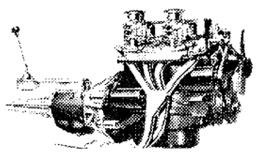
ENGINE MODIFICATIONS:
My Alpine came stock with an early canister oil filter. I changed the mount to take a modern screw-on disposable filter. I also changed to an Allison/Crane electronic ignition system and Bosch Platinum spark plugs. Pay particular attention to gaskets, seals, and the sealing compound used for each. Use the best stuff you can buy, and always go through all gaskets when the engine is out of the car. It may not be possible to get at them easily once the engine is installed. It’s also a good idea to replace the clutch disk whenever the engine is out, and a ball bearing throwout bearing (if you can find one) is a good way to avoid grief. Check the engine mounts, loose wires (particularly around exhaust system) loose bolts (these engines do shake) and keep all fluids topped up and changed on regular schedules. After experimenting with new synthetic oils, I settled on Castrol 20 wt. with an STP chaser. I experienced some blow-by with Mobil 1 synthetic oil. Remember to change oil and filter more frequently in dusty or hard service conditions. Also remember not to rev the engine before it gets full oil pressure. I use Slick 50 to reduce wear on startup.
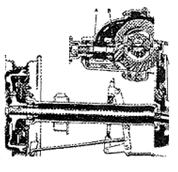
DRIVE LINE:
After rebuilding several transmissions, I’ve learned a few lessons the hard way. ·British bearings have a generally lousy reputation (indifferent metallurgy you know). Fortunately, most bearings can be cross matched to American, Japanese, Swedish or other good bearings. This goes for wheel bearings as well. When you’re in the transmission, carefully inspect all parts, and consider replacing synchro rings, all bearings, shift forks, circlips, springs, and any other suspect parts. You won’t be sorry, and will probably save in the long run. Gearboxes and rear ends are a good place to use the proper grade of synthetic oil with one exception. It is not recommended to use synthetic oil or additives with Laycock overdrive units, because the cone clutches could slip. By the way, once you’ve tried an overdrive on an Alpine you’ll want to use your non-overdrive transmission as a boat anchor. I’ve also heard of some hearty souls adapting 5 speed Toyota transmissions to Alpines (good luck). British rubber seals also tend to be of lower quality than American counterparts, but are easily cross matched. Replace them when you can, using single lipped (not double lipped) seals.

THEFT PROTECTION:
A hidden switch that grounds the primary circuit of the coil or a battery cutoff switch are inexpensive theft insurance Mark your car with your social security number in concealed places to aid retrieval if it is stolen. Steering wheel lock bars are popular, as are alarm systems. A removable dash plate on your stereo will also deter theft. I question the value of bumper stickers that threaten firearms or dobermans. I like the humble, self-effacing approach that feeds on the reputation of British cars. Mine reads: “All Parts Falling Off This Car are of the Finest English Workmanship.”
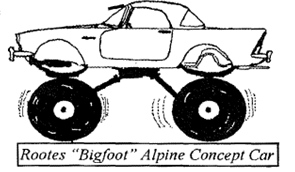
OTHER MODS AND ACCESSORIES:
Try to avoid wire wheels with a runner, as the splines and spokes will wear or break. Mini-light or other period wheels are a good choice for that touch of authenticity. After-market wheels can also be wider, and allow an increase in tire width which will aid cornering and stability. Stock Alpine wheels are 4.5 inches wide. Aftermarket alloys are available in 5.5 and 6 inch width. A 5.5 inch wheel should be able to accommodate up to 185-13 tires. An “S” rated or higher tire is recommended where performance is at all important. A roll bar is a smart safety option, particularly in a roadster. I added sun visors from a Ford Fiesta to my Alpine (an inexpensive solution compared to trying to buy originals). Dual side view mirrors are also recommended. Outfitting your runner with a tonneau cover, chrome luggage rack, badge bar, driving lights and other accessories could also enhance the looks and functionality. I couldn’t resist a custom zebra wood dash, chrome headlight doors, and a wooden shift knob with Sunbeam logo. I also installed a stereo/cassette. My car had 6 inch speaker cut-outs behind the kick panels on either side of the footwells below the dash, but there are other possible mounting strategies which would give better sound. A factory hard top (early or late) will make your Alpine a true 4 season runner. You’re on your own with continental kits, neon, 4X4 and low rider conversions, and the rest.
If you have other tips, comments, criticisms, or kudos, I would enjoy hearing from you. Like you I am still learning about these wondrous machines and I appreciate dialoging with my cohorts. Have fun, keep ’em running, and we’ll leave the shop light on for ya.
